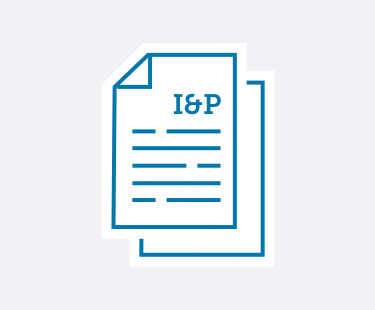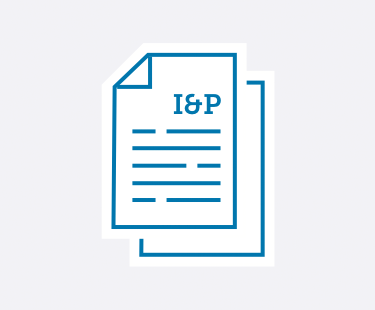

Learn practical strategies to handle emerging trends and leadership challenges in private schools.
No matter if you’re a School Head, Admission Director, Development Director, Board member, or any other private school administrator—Ideas & Perspectives, ISM’s premier private school publication, has strategic solutions for the pervasive problems you face.
- Tuition not keeping pace with your expenses? In I&P, explore how to use strategic financial planning to create your budget and appropriately adjust your tuition.
- Enrollment dropping off? Discover how to implement the right admission and enrollment management strategies that engage your community—and fill your classrooms.
- Trouble retaining teachers? Learn how you can best support your teachers using ISM’s Comprehensive Faculty Development framework. Your faculty members will become more enthusiastic about their roles—which ultimately improves student outcomes.
- Fundraising campaigns not as successful as you’d hoped? Implement ISM’s practical advice and guidance to build a thriving annual fund, construct an effective capital campaign, and secure major donors—no matter your community size or location.
- Not sure how to provide professional development—for you and your staff? Learn ways to develop and fund a successful professional development strategy. You can improve teacher-centered satisfaction and growth, which in turn strengthens student-centered learning.
- Problematic schedule? You can master the challenges of scheduling with the help of ISM’s practical advice, based on our experience with hundreds of schools and our time-tested theories.
- And so much more.
I&P has shared targeted research, up-to-date insight, and sound theory with school leaders since 1975. More than 8,500 private school decision-makers find the answers to their schools’ administrative and governance matters in our advisory letter. We give you the strategic answers you need.
As an ISM Silver or Gold member, you not only receive issues online and in print 10 times a year, but you have access to more than 600 articles in our web archive. Need help? It’s at your fingertips! Learn more and sign up for ISM's membership here.
Search
See the articles from our latest issue of Ideas & Perspectives.
Receiving Non-Cash Gifts: Fair Market Value and Appraisals
Volume 31 No. 1 // January 16, 2006
When donors decide to make gifts to your school, they want to know that you have a reasonable set of procedures in place for accepting the gifts and that you have a full understanding of the laws that govern the use and tax deductibility of the contributions. Donors trust you to be good stewards of their gifts, and to be conscientious counselors during the gift-giving process. Consequently, you must be prepared to answer questions from donors and to follow the IRS regulations governing the acceptance of gifts.
1. Already a member? Click here to login.
2. Not a member? Click here to become a member.
3. Not sure? We'll help you figure it out.
Board Evaluation and the Nature of the Committee on Trustees
Volume 31 No. 1 // January 16, 2006
Historically, evaluation of the Board of Trustees has been either (a) non-existent or (b) accomplished via a generic form designed for use by any nonprofit Board. If the results were used at all, they formed the basis for a discussion at an annual retreat session—an exercise best described as corporate self-analysis that seldom led to diagnosis and prescription for reconfiguring Board structure and function (i.e., for Board development) over time.
1. Already a member? Click here to login.
2. Not a member? Click here to become a member.
3. Not sure? We'll help you figure it out.
Advisory Program Survey Analysis and Reporting
Volume 31 No. 1 // January 16, 2006
This is the last in a series of four articles on the topic of using surveys to enhance your school’s mission-based advisory program. Previous articles focused on the solicitation of structured feedback from students (advisees), their parents, and faculty (advisers), and included instruments for use with each of these program constituents. In this article, we discuss survey analysis and reporting.
1. Already a member? Click here to login.
2. Not a member? Click here to become a member.
3. Not sure? We'll help you figure it out.
The Comprehensive Advancement Model
Volume 30 No. 16 // December 22, 2005
Coordinating your school marketing messages—to assure that your various constituencies not only support your programs but invest through admission, re-enrollment, and philanthropic giving—is a difficult task. It is essential that those who know your school best (your Board, faculty and staff, alumni, and parents) are speaking with a unified voice about your institution and its values. The Comprehensive Advancement Model™ (CAdvM) is an overarching coordinating and analytical framework that will ensure investment in your school by new and current students and families with existing and new resources. Its two major components—the Comprehensive Development Model and the Comprehensive Admission Model—share five key elements (see the adjacent diagram): 1) strategic Board, 2) leadership, 3) case for support, 4) prospects, and 5) plan of action.
1. Already a member? Click here to login.
2. Not a member? Click here to become a member.
3. Not sure? We'll help you figure it out.
The Operations' Administrator's Culture Profile
Volume 30 No. 16 // December 22, 2005
ISM defines culture as “the pattern of customs, ideas, and assumptions driving your staff’s collective set of professional attitudes and behaviors.” What happens in and between the departments of admission, parent relations, development, and business has strong impact on the capacity of the school to effectively recruit students, develop relationships, and enhance finances necessary for programmatic excellence over time. Operations Administrators (those who report to the Head but are not Academic Administrators, e.g., the Development Director, Admission Director, Director of Parent Relations, and Business Manager) are leaders of these functions and must direct their energies in an optimum direction.
1. Already a member? Click here to login.
2. Not a member? Click here to become a member.
3. Not sure? We'll help you figure it out.
The ISM X: RX for Success
Volume 30 No. 15 // November 26, 2005
Every School Head knows that keeping an eye on the “strategic ball” while responding to the day-to-day pressures of managing and leading a school is neither simple nor easy. Indeed, those daily pressures can destroy any headship in the sense of reducing the role to that of brush-fire containment. The strategic components in your role—those components critical to your school’s viability in the marketplace—must remain high on your week-to-week list of focal points, or both your headship and your institution’s long-term strength can deteriorate.
1. Already a member? Click here to login.
2. Not a member? Click here to become a member.
3. Not sure? We'll help you figure it out.
Survey Faculty to Enhance Your Mission-Based Advisory Program
Volume 30 No. 15 // November 26, 2005
The main means of enhancing your advisory program will be through the advisers themselves. Formal solicitation of their assessment of the program provides evaluative data while confirming the high value you place on this program.
1. Already a member? Click here to login.
2. Not a member? Click here to become a member.
3. Not sure? We'll help you figure it out.
Form I-9 Employment Eligibility Verification: Electronic Signatures and Storage
Volume 30 No. 14 // November 6, 2005
All U.S. employers, including private schools, must complete and retain Employment Eligibility Verification Forms (Form I-9) for individuals they employ. This responsibility stems from Section 274A of the Immigration and Nationality Act, which requires employers to hire only individuals authorized to work in the United States. The completed forms are not, however, filed with the government; they must be retained by the employer and be accessible for inspection by the Department of Homeland Security (DHS), the Office of Special Counsel for Immigration-Related Unfair Employment Practices (OSC), and the Department of Labor (DOL).
1. Already a member? Click here to login.
2. Not a member? Click here to become a member.
3. Not sure? We'll help you figure it out.
The Annual Administration Agenda
Volume 30 No. 14 // November 6, 2005
How do the members of the Management Team know the "right" things to do in the coming year? While the strategic plan (resulting in the annual agenda) drives what the Board is to do, the Management Team has less clear direction as to how to create the annual administration agenda. The following example shows how to make this important document a reality.
1. Already a member? Click here to login.
2. Not a member? Click here to become a member.
3. Not sure? We'll help you figure it out.
The Comprehensive Admission Model
Volume 30 No. 13 // October 15, 2005
The Comprehensive Admission Model (CAM) provides a model through which the foundational structure, language, and processes of admission are defined. The CAM creates an all-inclusive framework so that a strategically positioned Board can charge the Head and Admission Office with identifying prospective families; uncovering their interests; and admitting, enrolling, and matriculating mission-appropriate students whose families can be integrated into the culture of the school. It provides an evaluative framework in which to analyze your admission process and discover its strengths and challenges.
1. Already a member? Click here to login.
2. Not a member? Click here to become a member.
3. Not sure? We'll help you figure it out.


